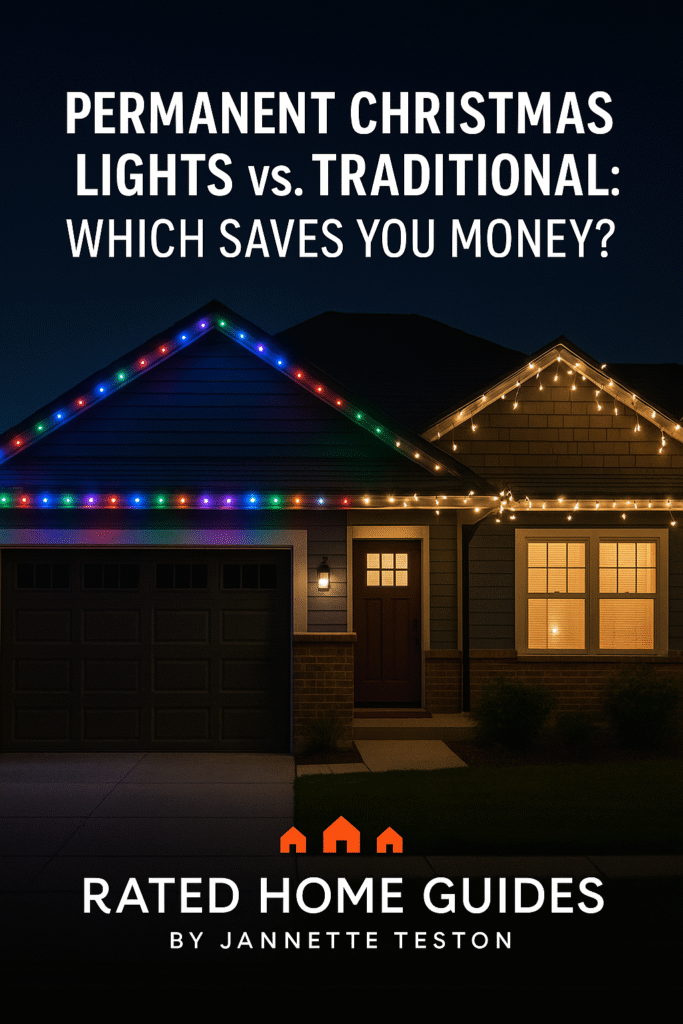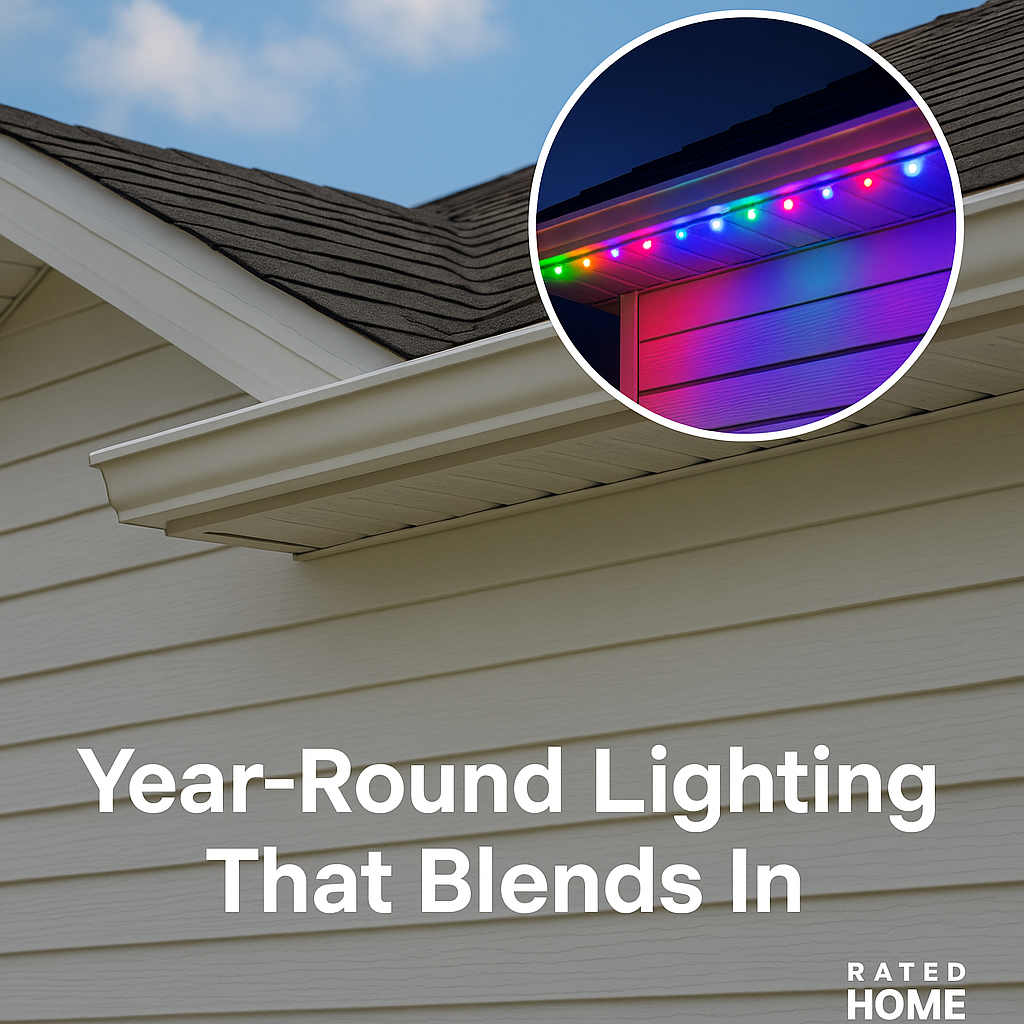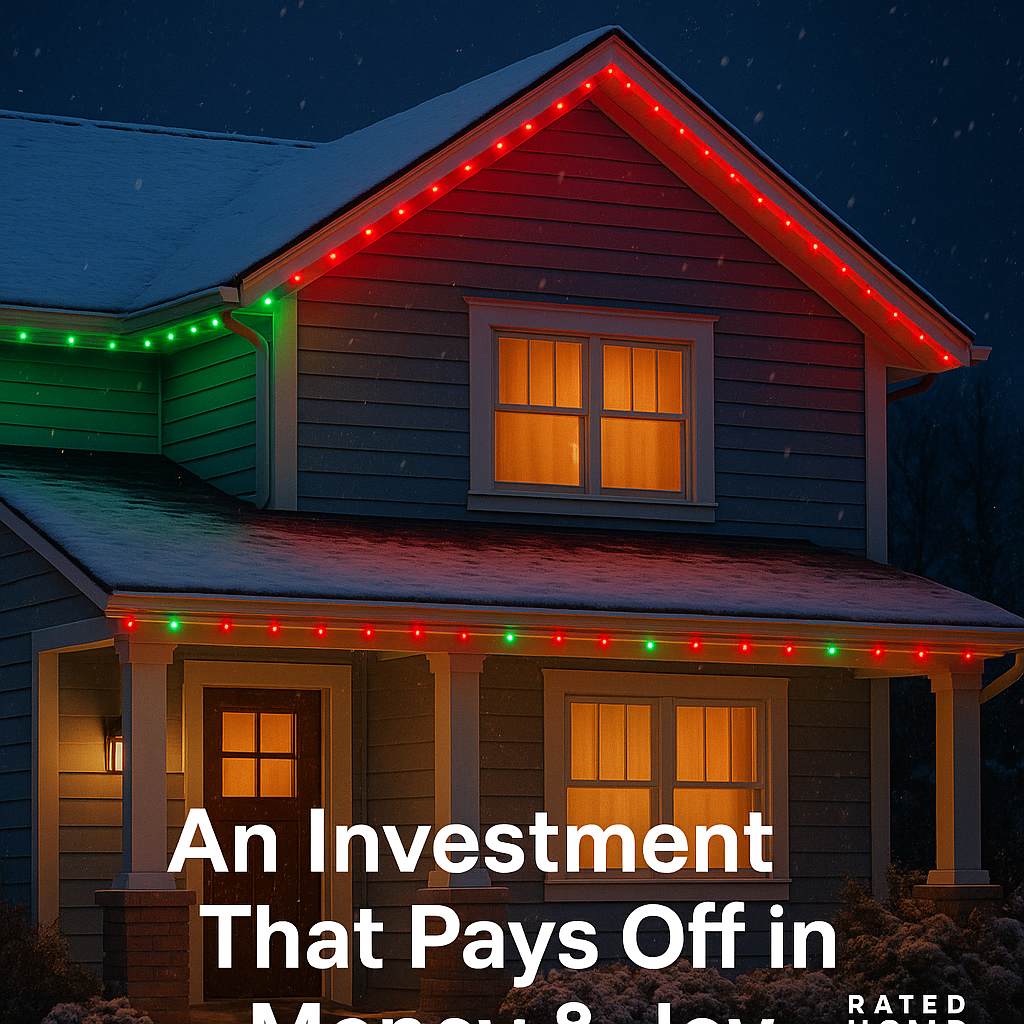Permanent Christmas Lights vs. Traditional: Which Saves You Money?
Permanent Christmas lights are quickly becoming the modern alternative to the tangled strings we’ve all battled every December. Instead of climbing ladders in freezing weather, you can flip a switch—or better yet, open an app—and light up your home in seconds. The appeal is obvious: no more annual stress, no more broken bulbs, and no more weekends lost to wrestling with cords.
But here’s the real debate: are permanent Christmas lights actually cheaper than traditional lights in the long run, or are they just a luxury convenience? On the surface, traditional lights seem like the more affordable choice, but once you factor in installation, replacements, and energy use, the math starts to tell a different story. In this post, we’ll break it all down together.

By the time you’re done reading, you’ll know whether permanent lights or traditional setups are the better investment for your home. Spoiler alert: the winner might surprise you once you consider both the dollars and the lifestyle perks.
What Are Permanent Christmas Lights?
Permanent Christmas lights are exactly what they sound like—lights designed to stay up all year. They’re installed along your roofline, eaves, or soffits in low-profile tracks that blend into your home’s design. During the day, you barely notice them, but at night they can be programmed into endless colors and patterns.
What sets them apart is their flexibility. Instead of pulling out lights only for December, you can customize them for any holiday, birthday party, or backyard barbecue. Imagine having red, white, and blue lights for the Fourth of July, or warm amber tones for Thanksgiving dinner. Permanent lights transform your house into a year-round celebration hub.

Another big benefit is durability. Permanent lights are typically made with high-quality LEDs that can last up to 15 years. That’s a big contrast from those flimsy strings that lose half their bulbs after just one season.
Finally, convenience plays a huge role. You won’t need ladders, storage bins, or replacement bulbs. With a few taps on your phone app, your home can shift from Christmas cheer to summer glow without breaking a sweat.
What’s the Cost of Permanent Christmas Lights?
Let’s talk numbers, because that’s often the deal-breaker. Permanent Christmas lights usually cost between $50 to $800 depending on the size of your home and whether you choose professional installation or DIY kits. At first glance, it feels like a major splurge. But it’s helpful to view it as a long-term investment rather than just a holiday purchase.
When you think about what goes into that price, it makes sense. You’re not only paying for high-quality LED lights but also the custom tracks, professional installation, and warranties that come with many systems. This isn’t like buying a few strings of lights from a big-box store—permanent lights are built to withstand years of weather.
The sticker shock can feel intimidating, but spread across the life of the lights, it’s often more affordable than you’d think. If you spend $4,000 and they last 15 years, that’s about $266 per year. Compare that to recurring installation fees and replacement bulbs for traditional lights, and you’ll start to see the balance shift.
Plus, permanent lights can even add value to your home. Many buyers see them as a luxury upgrade, much like smart thermostats or built-in sound systems. It’s not just about saving money—it’s about adding curb appeal and convenience that future homeowners will appreciate.
Traditional Christmas Lights: Lower Cost Upfront
There’s no denying traditional lights are easier on your wallet in the short term. You can pick up a box of incandescent or LED string lights for as little as $20–$50. For families on a budget, this feels like the obvious choice, especially if you don’t mind a little DIY decorating.
The problem is that these savings often don’t last. Between replacing broken strings, buying extension cords, and paying professionals for installation, the costs creep higher every year. What looks like a bargain can quickly become a holiday expense you didn’t plan for.
And then there’s the time factor. Anyone who has wrestled with tangled light strands knows it’s not exactly a festive experience. You might spend hours just to get your house decorated, only to repeat the process when it’s time to take them down.
Traditional lights also tend to wear out quickly. Most strings last only two to three seasons before they need replacing, especially if exposed to harsh winter conditions. That cycle of buying, replacing, and installing adds up both financially and mentally.
Energy Efficiency: Permanent vs. Traditional
Energy usage is another area where permanent lights shine—literally. Because most permanent systems are LED-based, they use significantly less electricity than traditional incandescent bulbs. This means lower bills during the holiday season, especially if you love running your lights every night.
Traditional incandescent strings are energy hogs. Depending on how many you use, your electricity costs could rise by $10–$20 per month for just one holiday season. Over a decade, that’s hundreds of dollars spent just on powering your decorations.
Permanent lights, by contrast, can run on just a fraction of that cost. Many systems are designed with energy savings in mind and can be programmed to use dimmer or more efficient modes. For homeowners who love to keep their houses lit year-round, this efficiency makes a huge difference.
And let’s not forget sustainability. LEDs last tens of thousands of hours, meaning fewer replacements and less waste. Choosing permanent lights isn’t just a financial decision—it’s an environmentally friendly one too.
Maintenance & Convenience
If you’ve ever climbed a ladder in the cold to hang lights, you know convenience is priceless. Traditional lights require annual effort: untangling, testing, replacing bulbs, and carefully stringing them across your gutters. It’s not just tiring—it can be dangerous too.
Permanent lights eliminate that hassle. Once installed, they stay put. With a smartphone app or remote control, you can change colors, patterns, and brightness in seconds without touching a ladder. That’s the kind of convenience that quickly becomes addictive.
Maintenance is another big win. Permanent lights are designed to withstand weather extremes, from heavy snow to blazing summer sun. Unlike traditional lights, you don’t have to worry about cords fraying or bulbs popping after just a season or two.
Plus, think about the storage you save. No more stuffing bins of tangled cords into your attic or garage. Permanent lights free up space and time, both of which are valuable during the busy holiday season.
ROI: Which One Saves You More?
Here’s where the math really comes into play. Let’s say you invest $4,000 in permanent lights with a lifespan of 15 years. That works out to around $266 per year. Compare that to $400 per year for professional installation plus $50 in replacement bulbs every other year for traditional lights—that’s $425 annually.
Over 10 years, traditional lights would cost about $4,250. Permanent lights? Still $4,000. By year 11, permanent lights are officially cheaper, and the savings only grow from there.
It’s not just about money, though. Add in the hours saved on decorating, the reduced risk of ladder accidents, and the year-round fun of customizable lights, and the ROI becomes even more obvious. Permanent lights aren’t just practical—they’re lifestyle-friendly.
So if you’re planning to stay in your home long term, permanent lights almost always win the financial argument. It’s one of those investments that pays off both in savings and in everyday happiness.
Who Should Choose Permanent Lights?
Permanent lights aren’t for everyone, and that’s okay. If you’re renting or planning to move soon, traditional lights may be the smarter choice since you won’t reap the long-term benefits. Sometimes a few inexpensive strings are all you need for seasonal cheer.
But if you own your home and see yourself living there for years, permanent lights are worth considering. They’re especially appealing to homeowners who love decorating for multiple holidays or who simply want to simplify their routines.
Families with busy schedules often find permanent lights a game-changer. No more spending entire weekends decorating—just tap your app and enjoy the glow. It’s holiday magic without the work.
And if you value curb appeal, permanent lights can set your home apart. They add a polished, modern look that makes your house stand out in the neighborhood year-round.
Final Thoughts: Are Permanent Christmas Lights Worth It?
So, when it comes to permanent Christmas lights vs. traditional, which one truly saves you money? In the short term, traditional lights will always be cheaper. But over time, permanent lights deliver real savings, unmatched convenience, and a touch of luxury that makes your life easier.

I like to think of it as “buy once, cry once.” Yes, the upfront cost stings, but after that, you never have to dread tangled cords, broken bulbs, or climbing icy ladders again. Instead, you enjoy effortless, energy-efficient lighting whenever you want it.
That said, it really comes down to your situation. If you’re staying put and value convenience, permanent lights are worth every penny. If you’re moving soon or love the tradition of putting lights up each year, traditional still makes sense.
Either way, lighting up your home should bring joy, not stress. And whichever option you choose, the glow of holiday lights will always be worth it.




